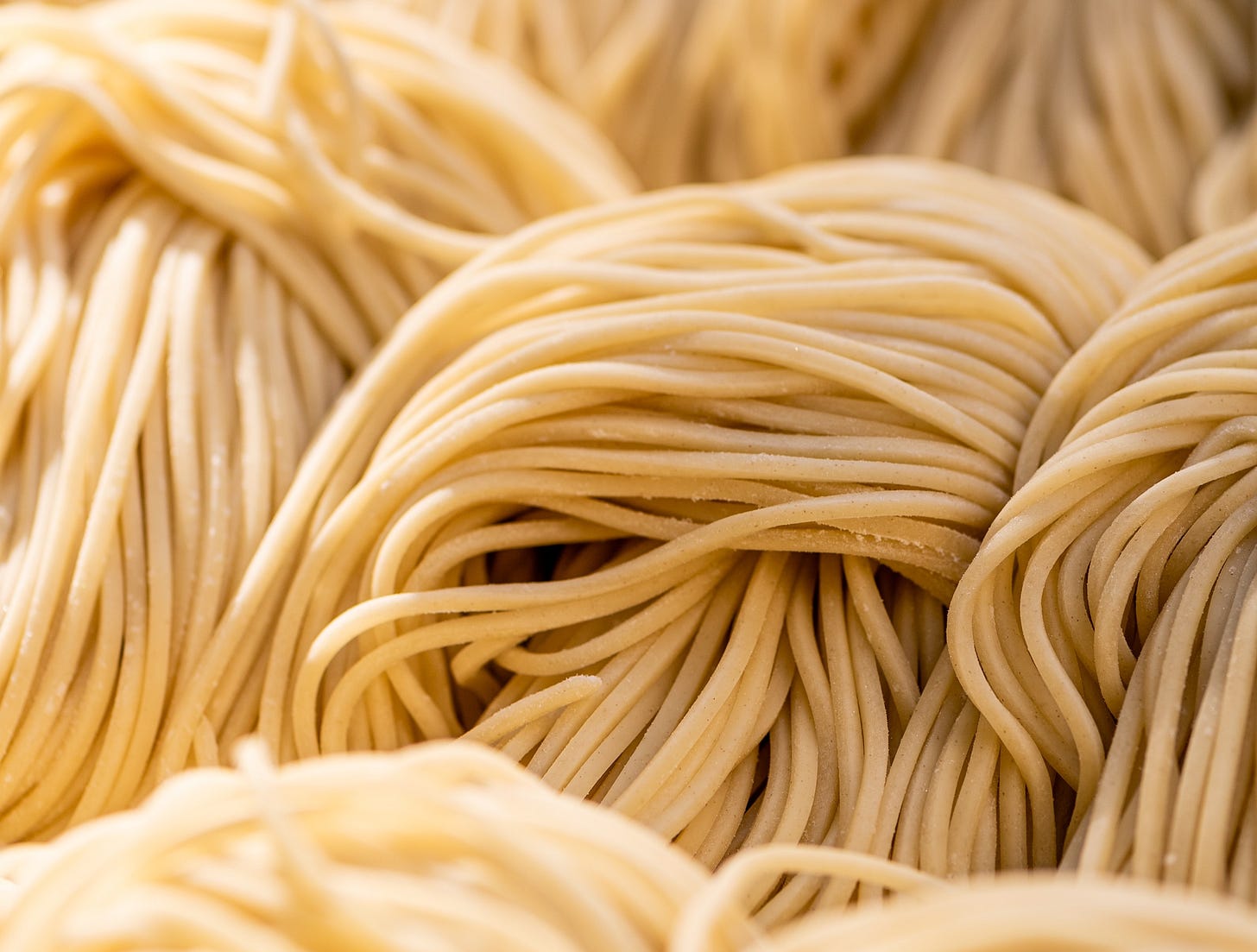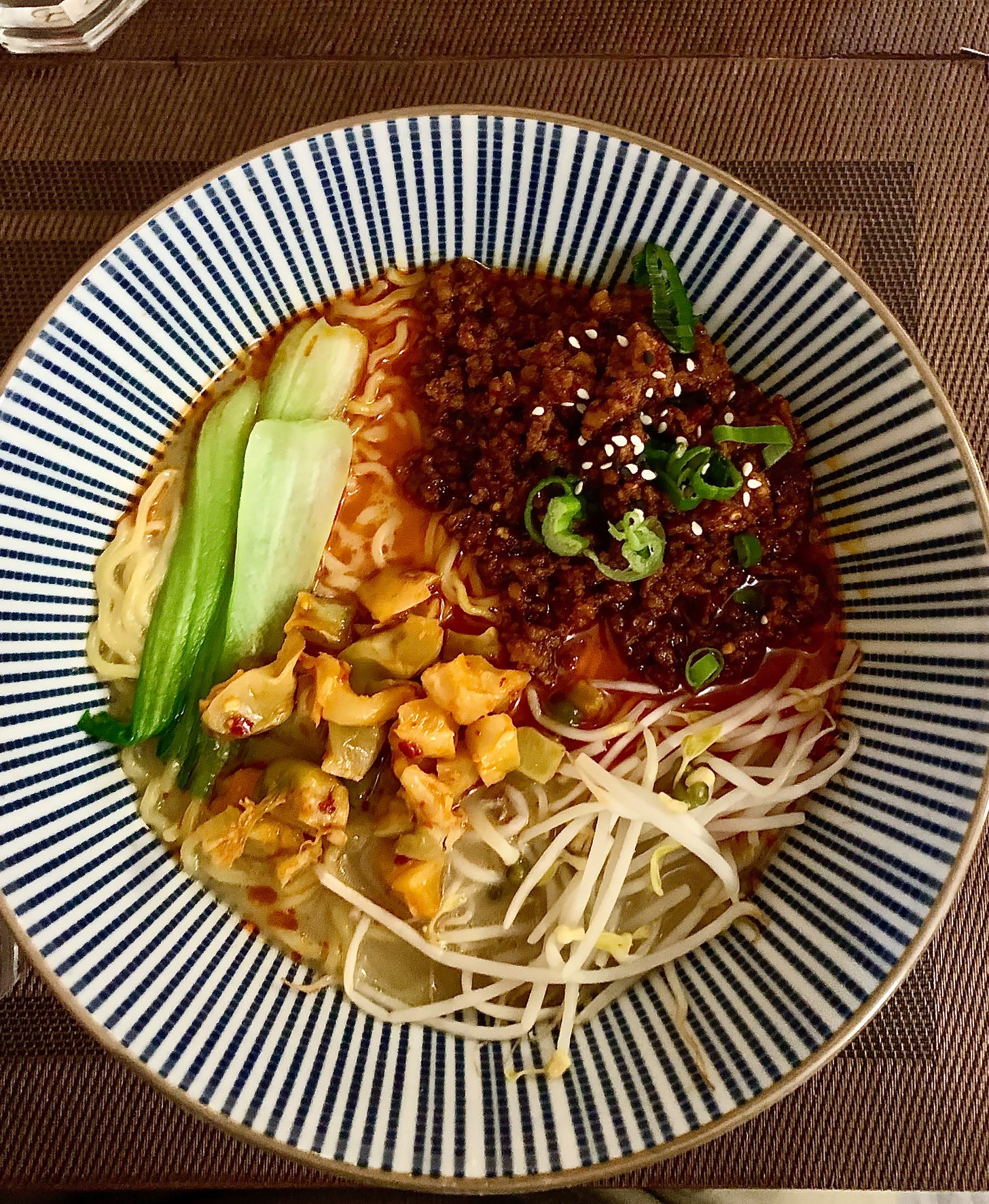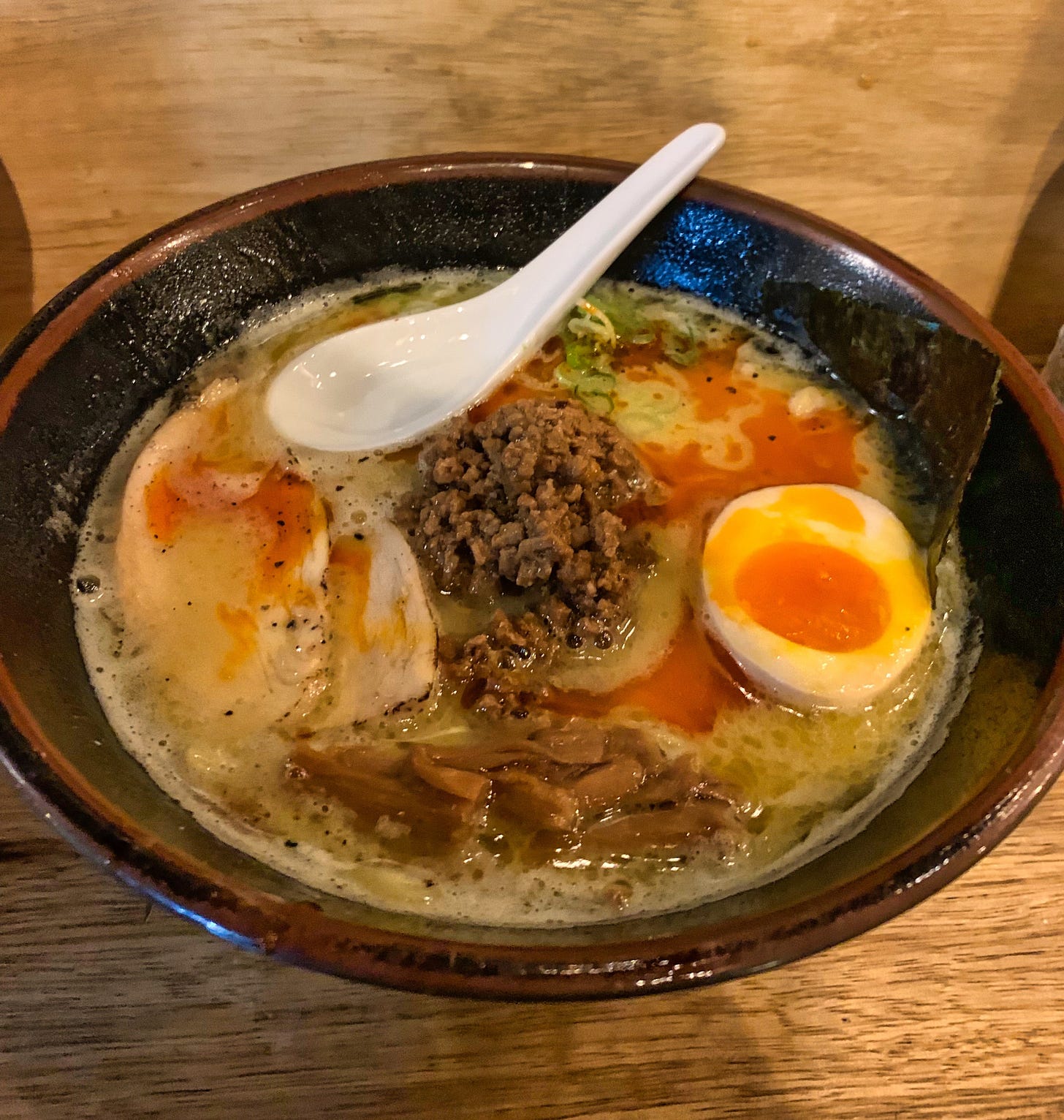An Introduction to Ramen 🍜
If you are new to ramen, you might be wondering: what is it? And what makes it so special? Today we go through a basic yet complete introduction to Ramen!
If you’re not yet a subscriber and like The Ramen Bowl, leave your email to start receiving all the new posts directly in your inbox! 👇
Introduction
Welcome to The Ramen Bowl, a spot where I share stories about all things ramen.
If you are new to the newsletter or ramen in general, you might be wondering: what is ramen? How did it come to be? And what makes it so special?
Well, you might be lucky, as this is an introductory bonus post of the newsletter, focused on giving a brief overview of ramen history and components, a few words on styles, and a little terminology, enough to get started (and understand what the hell am I saying in the other posts).
For all the people out there who need to know more about ramen, trust me, you will never look at a bowl of noodles the same way again.
A little reminder: a few bonus posts like this might come out in the future, though, normally, I plan to publish every two weeks (see my last piece about Garlic Confit Aroma Oil). Crafting ramen is a slow process, it takes time, and I want to make sure to deliver the best info testing what I do before serving it to you.
A little bit of Ramen history
To start, if you are not familiar with it, ramen is a type of Japanese noodle soup that has become quite popular around the world. Ramen is not only delicious but also very versatile and customizable. You can find countless distinct styles depending on the region, the ingredients, and the chef's flair.
Ramen's complex history traces back to China, where it is debated that wheat noodles were introduced to Japan in the late 19th century. The word "ramen" itself comes from the Chinese word "lamian", meaning "hand-pulled noodles".
However, ramen, as we know it today, was developed and popularized in Japan after World War II, when American wheat flour and meat became widely available. Ramen shops sprang up all over the country, offering cheap and filling meals to the hungry masses. Ramen soon became a staple of Japanese cuisine and culture, a symbol of creativity and innovation.
The Five Elements of Ramen
Ramen is composed of five main elements: soup, tare, aroma oil, noodles, and toppings. Each of them plays a vital role in creating a unique flavor and texture of a bowl. Let's take a closer look at each one.
Soup
The soup is the liquid base of ramen, usually made from boiling bones, meat, and vegetables for hours. Soups can be clear or cloudy, light or rich, depending on the ingredients and cooking method.
A clear and light soup is called Chintan, while a cloudy and rich one is called Paitan. This is one of the basic differentiations in ramen making, and you will see these terms fairly often.
The stock can be based on chicken, pork, seafood, or vegetables, even if some beef, duck, and other variants do exist.
Some soups need to be cooked for up to 18-20 hours, and some do not even stop with such a concept as perpetual stewing.
The soup is the component providing body and depth to ramen, while it does not usually bring saltiness: this job is delegated to tare.
Tare
This is the seasoning of ramen, usually a concentrated sauce that is added to the soup directly in the bowl.
Tare can be grouped into three categories, shio (salt-based), shoyu (soy-based), or miso (miso-based). This is overall the major categorization in ramen making.
The tare provides the saltiness and umami of ramen, giving its distinctive final flavor.
Aroma oil
The aroma oil is somehow the less mentioned component when talking about ramen, though it is as important as other elements.
The aroma oil is the fat that adds richness, depth, and fragrance to the ramen. Also, it helps with viscosity, heat insulation, and extra aesthetic when drizzled on top of a bowl!
It can be derived from animal fats, such as pork lard or chicken fat, or vegetable oils, such as sesame or neutral oil, then infused with aromatics such as garlic, onion, ginger, and many others.
Noodles
Everybody knows noodles, right?
Noodles are probably the most challenging part of making ramen, up to the point that the vast majority of home cooks and even ramen shops often outsource their production.
Ramen noodles are typically machine-made and produced by combining water with wheat and other flour. But what makes them different from other types of soba or pasta is the presence of Kansui, which is the name for alkaline salts such as sodium and potassium carbonate.
Kansui alters the chemistry of the dough, producing the distinctive ramen noodle's chewy texture and flavor.
The noodles can vary in thickness, shape, and texture, depending on the type of flour, water, and Kansui used.
Toppings
These are the ingredients placed on top of the soup and noodles. The toppings are the extras that enhance ramen providing contrast, variety, and visual appeal.
I would say the top three toppings are:
Chashu. Sliced meat, usually made out of marinated roasted pork belly. Ultra-soft, fatty, and delicious.
Ajitama. Soft-boiled eggs marinated with soy sauce. Many people's favorite.
Negi. Thin sliced green onion. A ramen bowl simply does not exist without these.
There is virtually no limit to toppings. Some other common examples are menma (bamboo shoots), nori seaweed, corn, mushrooms, and bean sprouts.
Composition and Serving
The fundamental composition of ramen usually goes like this: tare and aroma oil are combined at the bottom of the bowl, soup is poured into it, noodles are added, and toppings complete the dish.
Consider that ramen is traditionally a dish that has to be eaten quickly. First cause soup is best enjoyed while still hot, and second, given the first point, cause noodles tend to keep cooking in the hot soup.
Arguably, many advocate that a steaming ramen bowl should be consumed within 10 minutes since you get it. While it is still burning hot. Basically, you should get your tongue burned instead of waiting just a couple of minutes. I am serious!
There are many tips and tricks to keep in mind to preserve a bowl's heat and deal with temperatures. The easiest one I think is worth mentioning is always heating up the bowl before preparing ramen.
Styles?
Many different styles of ramen reflect the diversity and creativity of the dish.
Tonkotsu style features a rich and creamy white-colored soup made from pork bones that have been boiled for many hours.
Also, many places in Japan have regional styles. The famous Tokio-style is a shoyu ramen crafted with light chicken and seafood broth.
Some other styles are Chinese-inspired, like Tantanmen, a spicy sesame-based ramen.
But what are even the rules?
Tsukemen, literally "dipping noodles" featuring a super dense soup served separately from the noodles.
Not surprised? Mazemen (or mazesoba) instead is a soupless ramen.
Some more terminology
Here I gathered a few words you could frequently see in my next posts or searching the internet for recipes. These are useful to know.
Katsuobushi. Also known as bonito flakes, it is a thin-sliced smoked and fermented tuna. Often used as a subtle seafood element in ramen, it is one of the main sources of umami.
Kombu. An edible seaweed often used in soups and tare preparations. It provides tons of umami.
Dashi. One of the Japanese cuisine pillars, it is a basic broth that combines umami elements. It is often made with Katsuobushi and Kombu. Chances are you already tried this, as it is the base of miso soup.
Mirin. A sweet and slightly alcoholic (~14%) rice wine frequently used in Japanese cooking.
Togarashi. A typical Japanese chili-based spice mix.
Conclusion
As you might now imagine, ramen is not a simple food. It is a complex and diverse dish that can be customized to preferences and moods. It takes days in the making, and there are countless variations and styles of ramen across Japan and beyond.
No matter what kind of soup you choose, you can be sure it will warm your soul and fill your belly.
I hope this blog post has given you a brief overview of what ramen is, how it came to be, and how it can be enjoyed in different ways. Ramen is more than just a noodle soup; it's a culinary art form that expresses the personality and passion of its makers and eaters.
If you're a fan of ramen like me, I encourage you to try different styles and discover your own favorite. And if you're new to ramen, I hope this post has inspired you to give it a try. You won't regret it!
Until next time, happy slurping!
— The Ramen Bowl - ◡ -
If you’re not yet a subscriber and like The Ramen Bowl, leave your email to start receiving all the new posts directly in your inbox! 👇








Spietato, ehm, volevo dire ruthless!